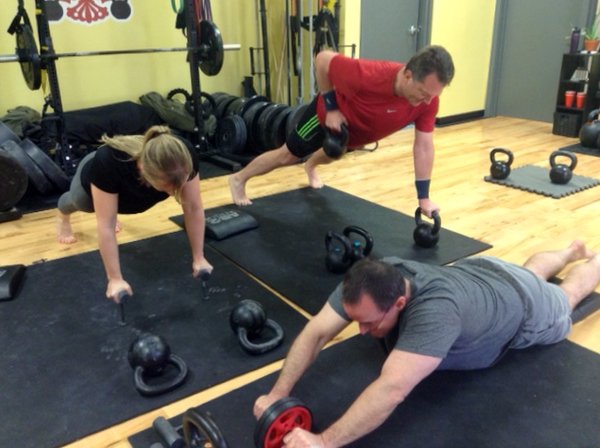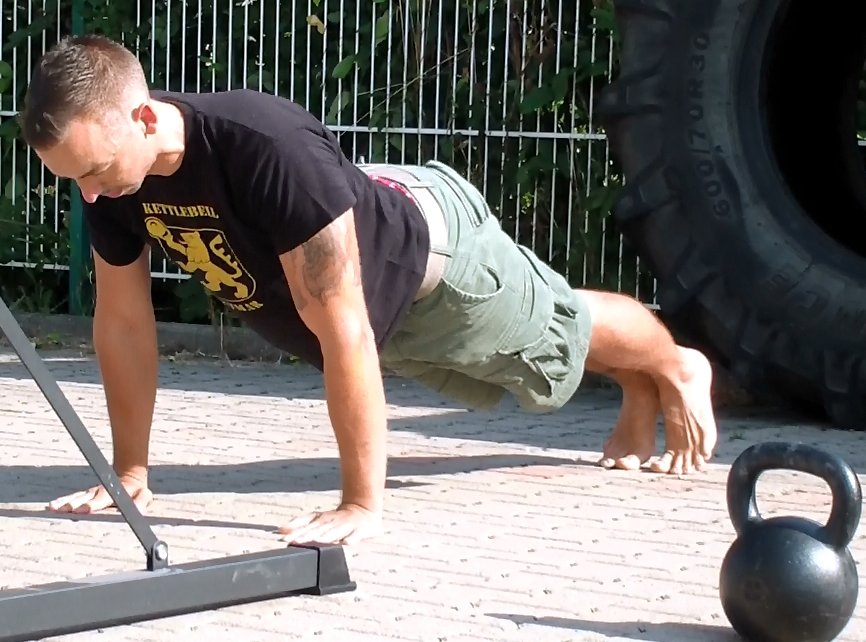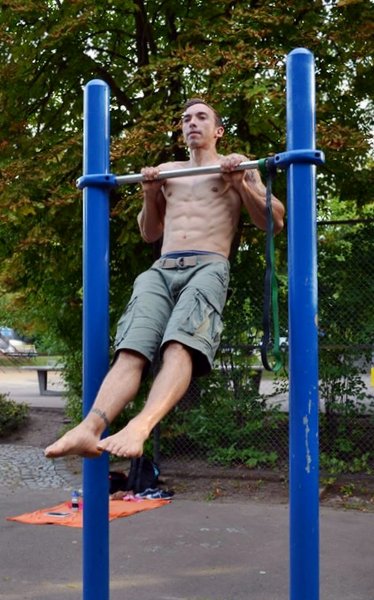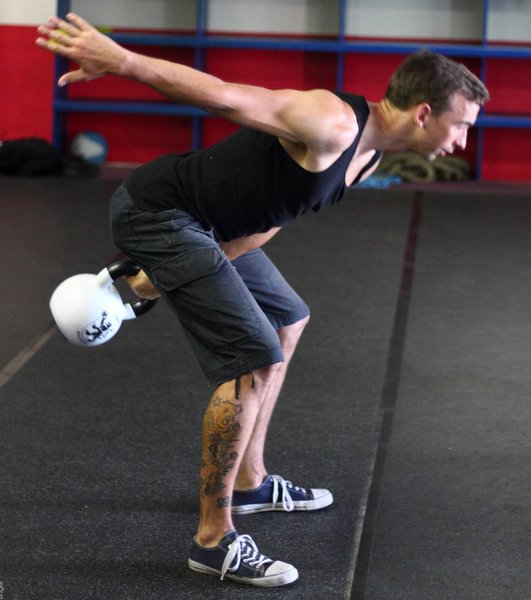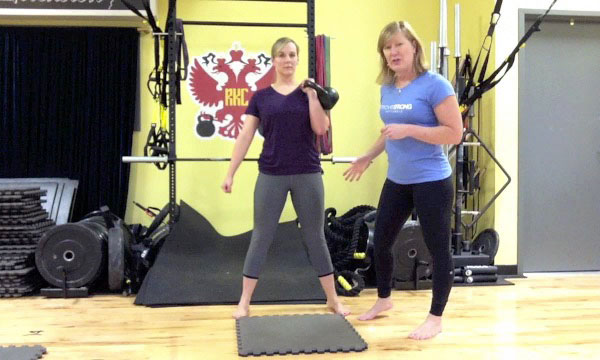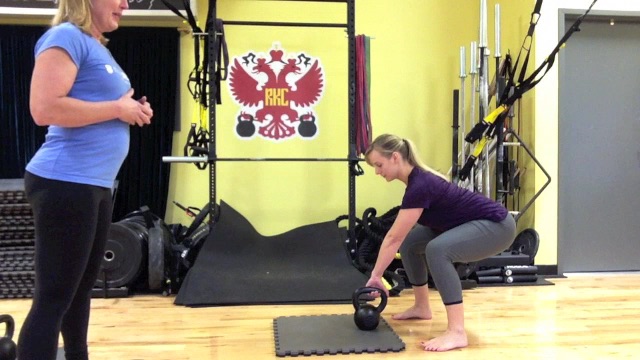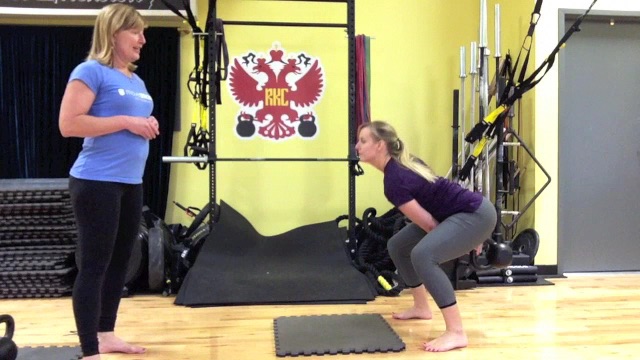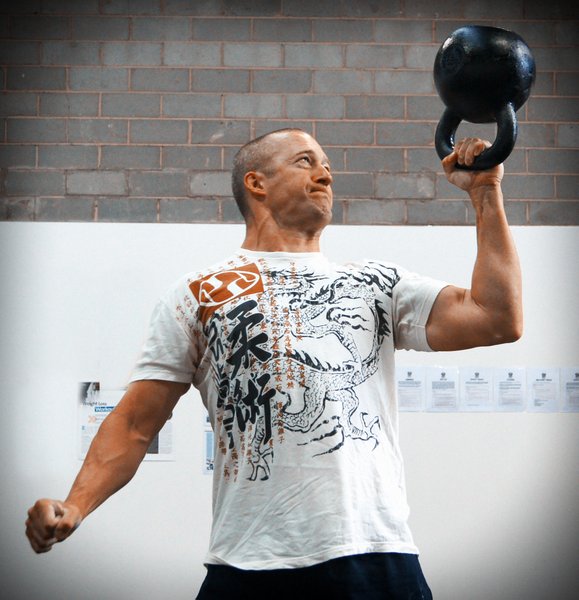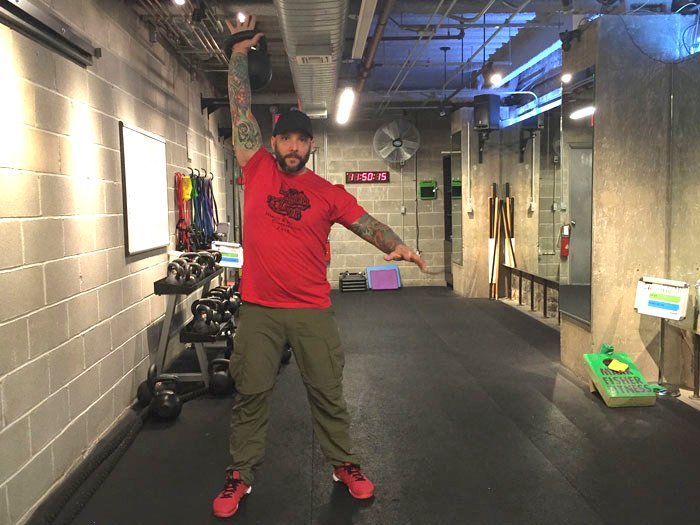
“You’re the best around. And nothing’s gonna ever keep you down”. That’s what they’ll be singing after you apply the following tips to your snatch technique. The following tips will improve your kettlebell snatch and help you destroy your snatch test if your RKC Workshop is coming up.
The kettlebell snatch is actually a fairly simple move, but people love to overcomplicate it. Over the years, I’ve broken down the technique into two simple words that pack a punch—or a crane kick—MIYAGI PINBALL! (Remember The Karate Kid?)
Two super common errors you’ll see with the Hardstyle kettlebell snatch are:
- Rotating or corkscrewing the kettlebell around the wrist as the kettlebell travels up and down.
- The arm staying straight during the entire snatch.
This is where “Miyagi” comes in. You have to paint the fence! Imagine you are Daniel-san standing in front of a fence. Your hand is an imaginary paintbrush. You’ll begin to paint upwards with the back of your fingers, then as you near the top of the fence, you’ll spike your fingers upward. The palm of your hand faces outward in this position. Now reverse the same motion on the way down. This will eliminate the first common error (corkscrew rotation) I previously mentioned. Painting the fence will also dramatically decrease the wear and tear on your hands when performing high rep kettlebell snatches.
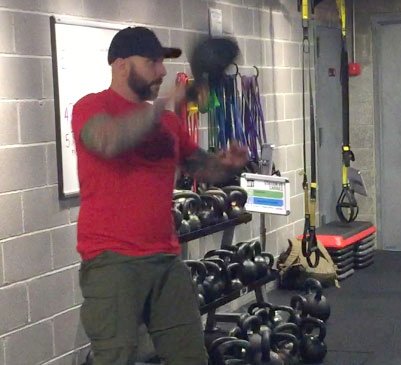
Do the following to fix the “straight arm” issue: Stand facing a wall, feet together, and with your right arm fully extended. Make a fist then move close enough to the wall that your arm is still straight and your knuckles are making contact with the wall. Now take a half step forward and allow your arm to bend. Paint the fence from this position. We’ve just shortened the arc of your kettlebell snatch, and that’s a very good thing.
Please note, that it is possible to try and shorten the arc too much. This will cause the kettlebell to travel almost straight down the body, forcing the elbow and shoulder to snap almost like a whip. We want to shorten the arc, not eliminate it, and you’ll still need some space to allow for a smooth transition into the backswing.
So, grab your kettlebell and go “Miyagi” on it! Hike the kettlebell back, snap your hips, let the elbow bend, and “paint the fence” until the kettlebell is locked out overhead. Reverse and repeat. If that feels different then you’ve earned that Karate Kid black belt from JC Penney.
Now, here’s where “pinball” comes into play. Having completed, witnessed, and administered over one hundred snatch tests, I’ve noticed another common (and fatal) flaw. Many people will allow their hinge to get shallow as they snatch—and they lose the ability to generate a TON of power when this happens.
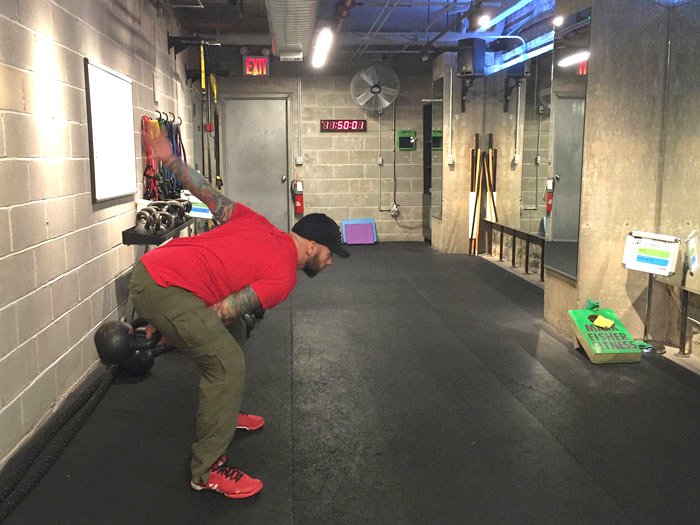
Your hips are a pinball hammer. The kettlebell is the pinball. Pull your hips deep into the hinge (always while keeping the shoulders above the hips, and hips above the knees). As you “paint the fence” into the downward eccentric phase of the snatch, “pull the hammer back” by deeply hinging, then squeeze your glutes hard and fast, drive your feet into the floor, stand tall and “paint that fence”! The kettlebell will soar overhead.
Here’s a combination to help practice the “Miyagi Pinball”:
- Heavy dead swing x 5
- Snatch x 5 per arm *Remember to “Paint the Fence”.
- Heavy dead swing x 3
- Snatch x 8 per arm
- Heavy dead swing x 1
- Snatch x 10 per arm
Here’s why it works:
The kettlebell snatch is about efficiency. Shortening your arc means that you will have to project the kettlebell over a lesser distance to get it overhead. Shortening the arc also allows you to cut the kettlebell’s momentum as it approaches the lockout. This drastically reduces the risk of wear and tear on your shoulders. Using your hips to project the kettlebell will also keep your shoulders and back healthy, while cutting back on undue fatigue during high rep snatches.
Do you think any above would help you crush an RKC Snatch Test?
I do.
https://youtu.be/VRybp4KhA3Q
A fellow coach at MFF, Laura Smith had this to say about “Miyagi Pinball”:
“After Steve told me to “paint the fence” (karate kid style of course) I never had hand issues again. After months of my hands tearing every time I did a snatch test, this was life changing.”
There it is gang.
Try it and let me know what you think.
-Fury
Steve “Coach Fury” Holiner’s superhero headquarters is Mark Fisher Fitness in NYC. Fury’s a Senior RKC, a DVRT Master Chief, and an Original Strength Instructor. He is available for classes, semi-privates, instructor training and programming at MFF. Check out coachfury.com, facebook.com/coachfury Instagram @iamcoachfury and Twitter @coachfury for more info.
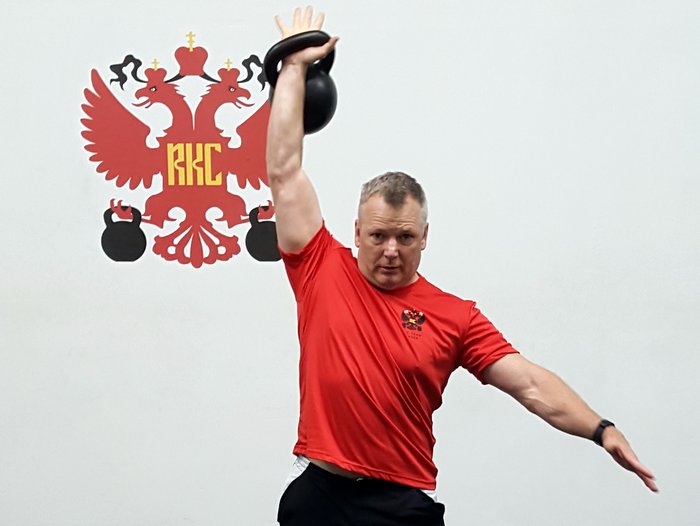
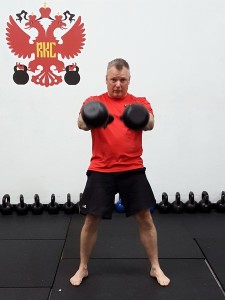
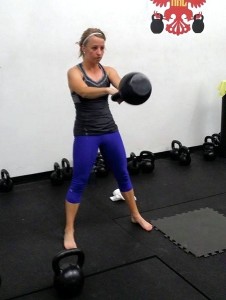
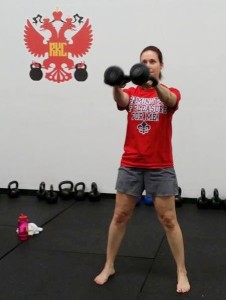
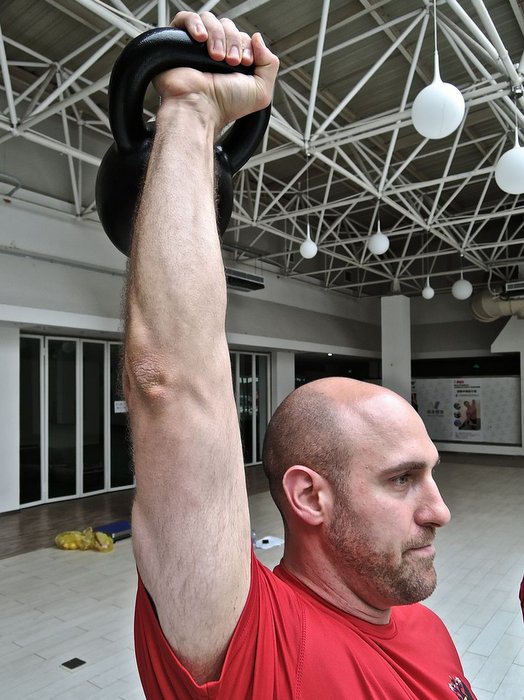
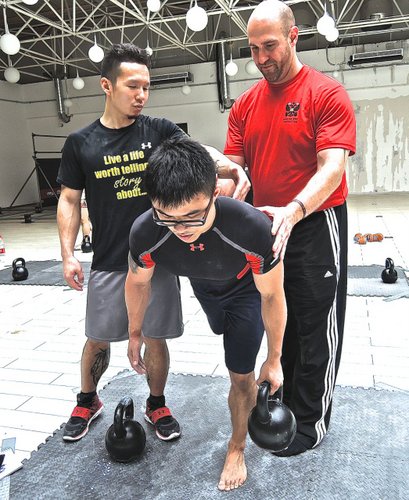
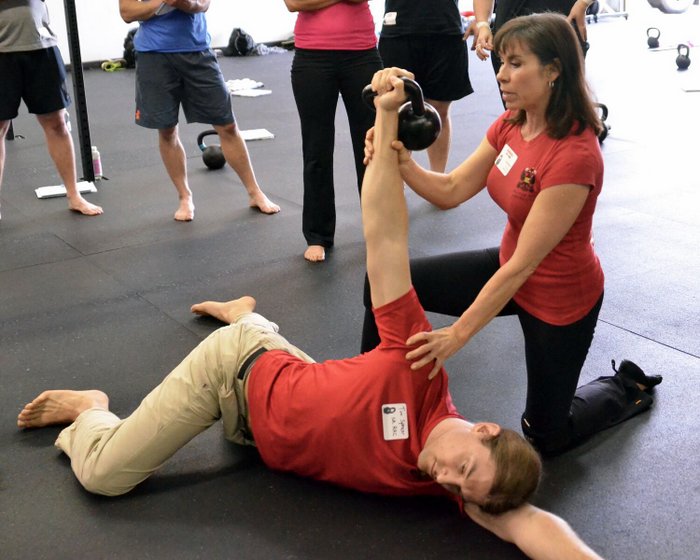
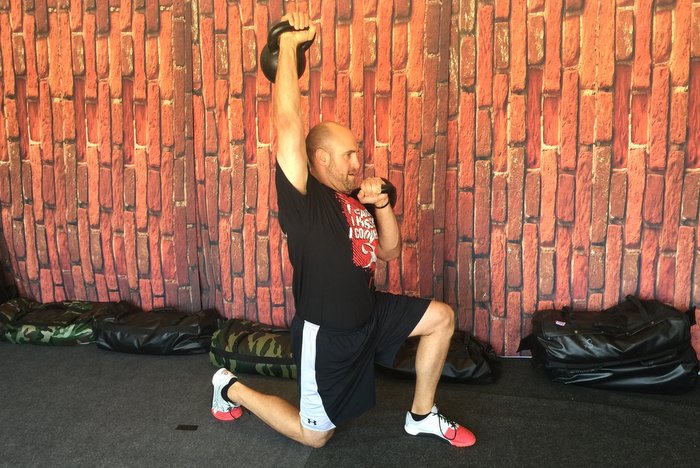
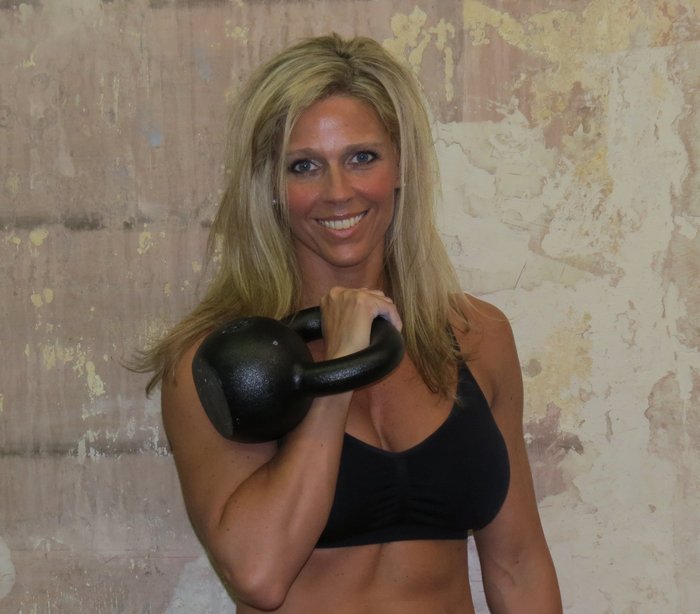
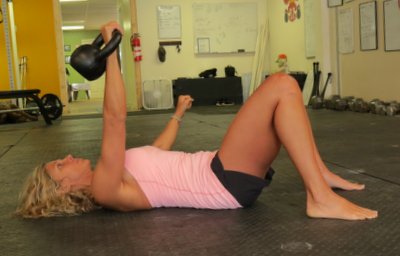
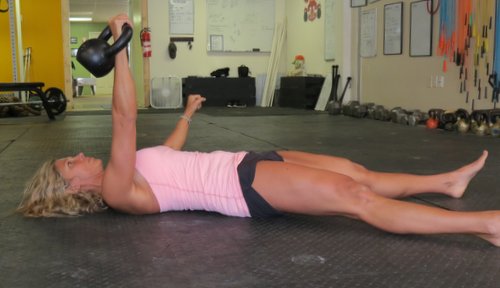
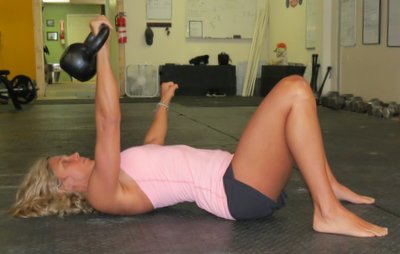
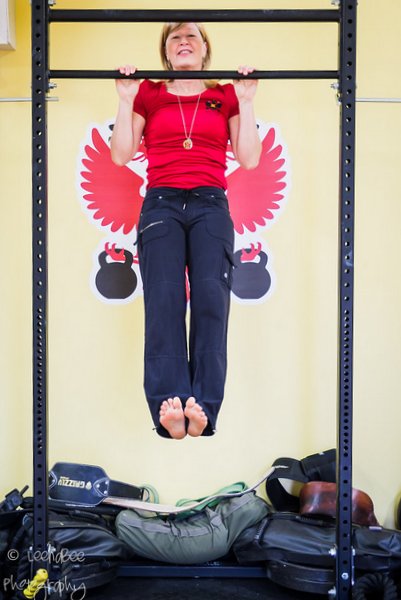
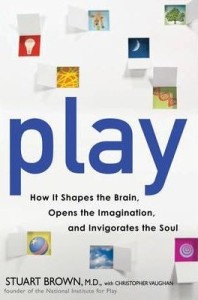 You can encourage creativity by using different fitness tools and combinations of movements that feel physically and mentally freeing, while still conditioning and challenging the body and the mind.
You can encourage creativity by using different fitness tools and combinations of movements that feel physically and mentally freeing, while still conditioning and challenging the body and the mind.